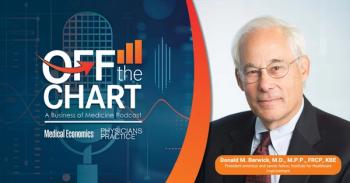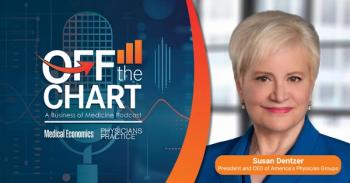
Q&A: Why One Doc Made the Switch to Direct Primary Care
A Louisiana-based doctor talks about being burned-out as an employed physician and switching to a direct primary-care model.
In the era of increasing regulatory oversight, more physicians are considering the direct primary-care model as an alternative method of practice.
Boston-based Amazing Charts, an EHR vendor to small practices and subsidiary of Pri-Med, recently polled its user group and found that a decent chunk of physicians were contemplating a switch to direct primary care (DPC). Of those 236 physicians surveyed, 37 percent said they were contemplating or had concrete plans to switch. Moreover, 65 percent of the respondents said they had a favorable view of DPC. Seventy percent of the respondents said the media didn't cover DPC enough.
The numbers were even higher in the
The DPC model is not without risks - one challenge is finding patients who are interested in paying a monthly fee for healthcare. John Squire, president and COO of Amazing Charts, also said the legalities surrounding DPC are "fuzzy at best," especially when it comes to using a health savings account (HSA) to pay for those services. "There needs to be national or state-by-state legislation that says, 'This is good," Squire said.
Despite this, many physicians are making the jump anyway. One such doctor is Randy Lamartiniere, an internal medicine physician out of Baton Rouge, La., who went into DPC several years ago. He was recently interviewed by Physicians Practice about his transition, the challenges of marketing, and his advice for physicians contemplating a change to DPC. Below are excerpts from the interview.
When and why did you switch to a DPC model?
Several years ago, I considered it but took the safe course and went to work for a local, large health system-based outpatient clinic. After two years of that, I was burned out and disappointed with the productivity pressures and the EHR hassles. I couldn't keep doing that. I left that job and wanted to do something different. Late last year, I made the decision to go with direct primary care.
What had you heard about DPC?
When I decided to make the change, I read about direct primary care and it really sounded attractive. The most attractive part was the amount of time you could spend with patients and the lower patient load. The negative was the ability to build up the number of patients you needed to stay afloat. Some docs couldn't get an adequate number of patients and didn't succeed. I had only been here two years in town and hadn't built up a massive number of patients. On the other hand, I had to make a change, I couldn't practice the way I was practicing in a conventional clinic.
How did your patients react?
When I told them about [the change], they were mostly sympathetic and supportive. I was the doctor (despite the complication it had on my practice) who always spent more time than average looking and listening to patients. I was the “slow doctor.” The patients always appreciated that, so when I told them I was making the change, they understood. When I told them why, they were supportive. The question was how many would follow. Being supportive is one thing, but switching over from an insurance-based business to cash-based is a big step for a lot of patients.
How many patients have switched over?
About 10 percent. I had 2,000 on my panel and I've gotten almost 200 patients in six months. I started in March and I'm ahead of where I expected I'd be. I expected 100 patients in six months, 200 in a year. So 200 in six months isn't bad.
What are your thoughts on the transition so far?
It's been great. I almost would have liked a slower takeoff because I would have had more time to develop it. Starting a business, you like to start small and have a lot things you want to work on. It took off so fast that keeping up with new patients has been the biggest challenge. Overall though, I have thoroughly enjoyed it. Being my own boss, spending more time with patients, not having the pressures of productivity. It's been quite an improvement. At my previous practice, I resigned myself to being a miserable doctor for the rest of my career. This has opened my eyes to something that could be rewarding and improve my quality of life, while being financially successful as well.
What are some of the challenges you've faced?
Marketing was one of them. Finding ways to get my name out there. Finding a location. The startup supplies weren't a big problem. Doing the things I never realized I had to do: Building and scheduling and finding an EHR that would fit all that. It's all coming together. I'm fine-tuning my practice to get it to the point where I want. When I first started, I took everyone who came. I wasn't selective. You can't afford to say no when you have an empty office. I'm aiming for 250 [patients], and with the last 50, I'll be more selective. The biggest challenge was the business part; I had never done that before. I had some help with mentor types, which really helped me out a lot.
How do you plan on being selective?
I'm going to work on marketing to … health-conscious patients. Right now, I'm getting a lot of patients that can't afford insurance but can afford the membership. I'm also getting some Medicaid patients that … are willing to pay membership fees to get the care their primary-care physicians are not providing under Medicaid. I'm also screening patients better. I didn't screen early on. When they call, I'm making requirements to join the practice. That alone has made a big difference.
How have you altered your technology investments, based on being in a DPC model?
I am trying to keep it simple. My motto is low-overhead membership fees. I am using a low-cost EHR that is very practical and physician oriented. It's much better than the one I was dealing with at my old practice, which was excessively complicated and cumbersome.
What advice would you give to doctors considering a switch to this model?
In terms of marketing, word of mouth is still the best method. If you can get word of mouth and the right patients, it goes a long way. Keep the initial investment low, avoid dealing with insurance and Medicare … and keep your schedule to fit your lifestyle. Do more of what you enjoy and less of what you don't. Lastly, keep the patients in mind. I wish I had done it sooner.
Newsletter
Optimize your practice with the Physicians Practice newsletter, offering management pearls, leadership tips, and business strategies tailored for practice administrators and physicians of any specialty.










